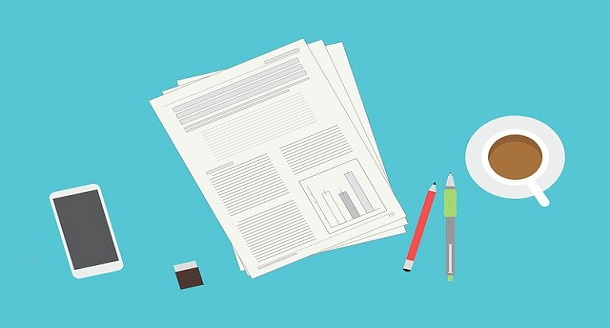
Academic report writing is used to communicate research findings, analyses, or ideas within an academic context. It is typically used in universities and other educational institutions to share the results of research studies, literature reviews, or other scholarly investigations.
Academic reports are typically structured around a clear and concise thesis statement, which provides the main argument or focus of the report.
They may also include an abstract, an introduction that sets out the context and purpose of the report methodology section, a review of the existing research on the subject, an explanation of the methods used to collect and analyze data, a results section that presents the findings of the study, a discussion section that interprets the results and explores their implications, and a conclusion that summarizes the key findings and their significance.
Academic reports often adhere to specific formatting and referencing styles, such as APA, MLA, or Chicago, and are typically written in a formal, objective tone that prioritizes clarity and precision.
How to write an academic report?
Structure and Format of an Academic Report:
An academic report’s structure and format can vary based on the assignment’s specific requirements and the subject matter. However, there are a few general guidelines that can be followed to produce an academic report that is both effective and well-structured:
Title Page:
The first page of the report should include the report’s title, the author’s name, the institution’s name, the date, and any other relevant information required by the instructor.
Abstract:
An abstract is an explanation summary of the report that provides a concise overview of the study’s purpose, methods, results, and conclusions. The abstract is typically between 100 and 250 words and should be written after completing the work report.
Table of Contents:
A table of contents lists the main sections and sub-sections of the report and provides page numbers for each section.
Introduction:
The introduction should provide an overview of the research question or problem being addressed, the purpose of the study, and the methodology used to investigate the problem. It should also provide a thesis statement that concisely summarises the report’s main argument or focus.
Literature Review:
A literature review provides a comprehensive summary and analysis of existing research on the report’s topic. It should include a discussion of the key concepts and theories related to the research question and a critical evaluation of the strengths and weaknesses of previous studies.
Methodology:
The methodology section describes the methods used to collect and analyze data for the study. It should include the research design, sampling methods, data collection procedures, and data analysis techniques.
Results:
The study’s findings are presented in the results section clearly and concisely. It may include tables, charts, or graphs to assist in illuminating the data and providing a visual representation of the outcomes.
Discussion:
The study’s findings are discussed in the discussion section. Explores their implications. It should critically analyze and relate the findings to the research question or problem. It should also discuss any limitations of the study and suggest areas for further research.
Planning and Organizing Your Report:
Planning and organizing your report is an essential step in academic report writing. Effective planning can help ensure the report is well-structured, coherent, and effectively communicates the research findings. Here are some tips for planning and organizing your report:
Understand the assignment requirements:
Before beginning to write the report, thoroughly understand the assignment requirements. This includes the topic, the report’s scope, the report, the length of the report, and any specific formatting or citation requirements.
Develop a clear thesis statement:
A clear and concise thesis statement provides the focus and direction for the report. The thesis statement should be included in the introduction and clearly articulate the report’s main argument or purpose.
Create an outline:
An outline can help organize the report into a logical and coherent structure. The outline should include the major sections of the report, such as the introduction, literature review, methodology, results, discussion, and conclusion.
Write a draft:
Once you have developed an outline, begin writing a draft of the report. The draft should follow the outline and include all of the necessary sections.
Revise and edit:
After completing the draft, review and revise the report to ensure it effectively communicates the research findings and meets the assignment requirements. Pay attention to the structure and organization of the report, as well as the clarity and coherence of the writing.
Use headings and subheadings:
Headings and subheadings can help organize the report and make it easier to read and understand. Use descriptive headings and subheadings that indicate the content of each section.
Use visuals:
Visuals such as tables, graphs, and charts can help illustrate the research findings and make the report more engaging and informative. Make sure to use visuals that are relevant and clearly labelled.
Proofread:
Finally, proofread the report to check for grammar, punctuation, spelling, and formatting errors. Ensure also to check all citations and references to ensure they are accurate and properly formatted.
Citing Sources and Avoiding Plagiarism:
Citing sources and avoiding plagiarism are important components of academic report writing. Plagiarism occurs when a writer uses another person’s ideas or words without proper attribution, resulting in serious consequences such as failing the assignment, disciplinary action, or even expulsion from school. Here are some tips for citing sources and avoiding plagiarism in academic reports:
Understand the different types of sources:
Academic reports may use various sources, including books, journal articles, websites, and other online sources. It’s important to understand the different types of sources and the proper citation format for each one.
Use citation styles correctly:
Different disciplines or fields of study may require different citation styles, such as APA, MLA, or Chicago. It’s important to use the correct citation style and format for the assignment’s specific requirements.
Keep track of sources:
It’s important to keep track of all sources used in the report, including the author’s name, the title of the work, the publication date, and other relevant information. This can be done using citation management software or a reference list.
Use quotation marks and paraphrasing:
When directly quoting a source, use quotation marks and provide a citation. When paraphrasing a source, reword the information in your own words and still provide a citation.
Use multiple sources:
Avoid relying on a single source for all of your information. Instead, use multiple sources to support your arguments and provide a balanced perspective.
Avoid self-plagiarism:
If you have used previous work in your report, cite yourself properly as the author.
Use plagiarism detection software:
Many schools use plagiarism detection software to check for plagiarism in academic reports. You can also use these tools to check your work before submitting it.
Writing Clear and Concise Sentences:
Writing clear and concise sentences is essential in academic report writing to communicate research findings and ideas to the reader effectively. Here are some tips for writing clear and concise sentences:
Use active voice:
In active voice, the subject of the sentence achieves the action, making the sentence more direct and easier to understand. For example, “The researcher experimented” is clearer and more concise than “The researcher experimented.”
Avoid wordiness:
Wordiness can make sentences unnecessarily long and difficult to read. Try to eliminate unnecessary words and phrases, such as “to” (use “to” instead), “because” (use “because”), and “at this point” (use “now”).
Use specific language:
Using specific language can make sentences clearer and more concise. Avoid vague or ambiguous language; use concrete examples and descriptive language to illustrate your points.
Break up long sentences:
Long sentences can be difficult to follow and contain multiple ideas or clauses. Try to break up long sentences into shorter, more focused sentences that each convey a single idea.
Vary sentence structure:
Using a variety of sentence structures can make writing more engaging and interesting to read. Try using different sentence lengths, types (simple, compound, complex), and structures (subject-verb-object, subject-verb-complement, etc.).
Use transitions:
Transitions can help connect ideas and make writing more coherent. Use meaningful words and phrases such as “however,” “therefore,” “meanwhile,” and “in addition” to signal shifts in thought or indicate relationships between ideas.
Creating Effective Headings and Subheadings:
Creating effective headings and subheadings is an important aspect of academic report writing. Headings and subheadings can help organize the report and make it simple for the reader to follow the structure and flow of the report. Here are some tips for creating effective organize and subheadings:
Use descriptive headings:
Headings should accurately reflect the section’s content and clearly indicate what the reader can expect to find. Use descriptive headings that clearly and briefly summarize the content of the section.
Be consistent:
Use a consistent format for headings throughout the report. This includes using the same font, size, and style to summarize readings and subheadings.
Use parallel structure:
Use parallel structure for headings and subheadings within the same level. For example, all Level 1 heading should have a similar grammatical structure, such as starting with a noun or verb.
Follow a logical hierarchy:
Use a logical hierarchy for headings and subheadings. This means that Level 1 headings should be more general, while Level 2 and 3 headings should be more specific.
Use formatting to distinguish between levels:
Use formatting, such as bold or italicized text, to distinguish between different levels of headings. For example, Level 1 headings may be bold and centred, while Level 2 headings may be bold and left-aligned.
Limit the number of levels:
Avoid using too many levels of headings, as this can make the report difficult to follow. Typically, 3-4 levels of headings are sufficient for most reports.
Use headings to guide the reader:
Use headings to guide the reader through the report and help them understand its overall structure and flow. Headings can also be used to emphasize important points and key findings.
Consider using a table of contents:
Consider including a table of contents for longer reports to help the reader navigate the report and find speciemphasizeons quickly and easily.
Using Visual Aids to Enhance Your Report:
Using visual aids can enhance the readability and effectiveness of an academic report. Visual aids can help convey complex information, make key points stand out, and illustrate data more engaging and accessible way. Here are some tips for using visual aids in your report:
Choose the right type of visual aid:
Consider what type of visual aid will best illustrate your data or support your argument. Common types of visual aids include graphs, charts, tables, diagrams, and images.
Keep it simple:
The visual aids should be clear and easy to understand. Avoid cluttering the visual aid with too much information, labels, or decorations. Please keep it simple and focused on conveying the key message.
Label the visual aid:
Clearly label each visual aid so that the reader knows what it represents. Provide a title and, if applicable, a source for the data.
Integrate the visual aid into the text:
The visual aid should be integrated smoothly into the text of the report. Make sure to refer to the visual aid in the text and explain what it represents and how it supports your argument.
Use appropriate formatting:
Use appropriate formatting to make the visual aid clear and easy to read. This includes using contrasting colours, clear fonts, and appropriate font sizes.
Consider accessibility:
Ensure the visual aids are accessible to all readers, including those with visual impairments. Use alternative text descriptions or provide an audio description for each visual aid.
Don’t overuse visual aids:
Avoid overusing visual aids, as this can distract from the report’s main message. Only use visual aids when necessary and add value to the report.
Overall, visual aids can enhance the readability and effectiveness of an academic report as long as they are used appropriately and thoughtfully.
Editing and Revising Your Report:
Editing and revising your academic report is an essential step in writing that can help you refine and improve your work. Here are some tips for editing and revising your report:
Take a break:
After finishing your report, take a break for a few hours or even a few days before you start editing and revising. This will give you a fresh perspective on your work.
Read your report aloud:
Reading your report aloud can help you identify awkward phrasing, grammatical errors, and inconsistencies.
Focus on clarity and coherence:
Ensure your report is clear and coherent, with a logical flow of ideas. Check that each sentence and paragraph contributes to the overall purpose of the report.
Check for grammar and punctuation errors:
Use a grammar and spell-checking tool, but also proofread your report manually. Pay attention to common mistakes like using the same subject and verb, punctuation, and capitalization.
Cut unnecessary words:
Remove any unnecessary words or phrases that do not add to the clarity or coherence of your report.
Check for consistency:
Ensure that your report is consistent in terms of formatting, citation style, and use of terminology.
Get feedback:
Ask a peer, a tutor, or a supervisor to read and give feedback on your report. Consider their comments and suggestions carefully and use them to improve your report.
Read the report backwards: This technique can help you identify spelling and grammatical errors you might have missed when reading forwards.
Check your references:
Ensure that your references are complete and accurate and cited correctly throughout the report.
Overall, editing and revising your report can help you improve your work’s clarity, coherence, and overall quality. Following these tips guarantees that your report is well-written, error-free, and effectively communicates your ideas.
Common Pitfalls to Avoid in Report Writing:
There are several common pitfalls that writers should avoid. The following are some of the most typical avoid in report writing:
Lack of focus:
A report should have a clear focus and purpose. Avoid including irrelevant or tangential details that do not contribute to the main message.
Poor organization:
A report should be well-organized, with a logical flow of ideas. Avoid jumping back and forth between different topics or presenting information disorganizedly.
Inappropriate language:
Use language appropriate for the intended audience and purpose of the report. Avoid using overly technical or jarorganizationnguage if it is not newell-organizedropriate.
Plagiarism:
Always cite sources appropriately and avoid using others’ work without giving proper credit.
Idisorganizedformation:
Ensure that all information in the report is accurate and supported by evidence.
Lack of coherence:
A report should have a coherent structure and narrative flow. Avoid presenting information in a disjointed or confusing way.
Inadequate proofreading and editing:
Always proofread and edit your report carefully. Make sure it is error-free and successfully communicates your ideas.
Lack of visual aids:
Visual aids can be valuable in report writing, but they should be used appropriately and effectively.
Lack of originality:
Avoid regurgitating existing research or ideas. Instead, strive to present unique perspectives and insights.
By avoiding these common pitfalls, you can produce a well-written and effective report that effectively communicates your ideas to your intended audience.
Tips for Effective Proofreading and Formatting:
Proofreading and formatting are important final steps in the report-writing process. Here are some tips to help you constructively proofread and format your report:
Take a break:
After finishing writing and editing your report, take a break for a few hours or even a day before you start proofreading and formatting. This will give you a fresh perspective on your work.
Proofread systematically:
Review your report line by line, paying attention to spelling, grammar, punctuation, and formatting errors. Consider reading your report backwards to catch errors you might otherwise miss.
Use tools:
Utilize tools such as grammar and spell checkers and editing software to help you identify errors and inconsistencies.
Pay attention to formatting:
Ensure that your report is consistent in font, font size, spacing, and margins. Follow your instructor’s formatting instructions or organization.
Check headings and subheadings:
Ensure that your headings and subheadiUtilize consistent in formatting and hierarchy.
Check references:
Ensure that your references are complete and accurate and cited correctly throughout the report.
Print a hard copy:
Proofreading on a printed copy can help you identify errors more easily.
Get a second opinion:
Ask an organization or supervisor to review your report and provide feedback on errors or formatting issues.
By following these tips, you can ensure that your report is well-formatted and error-free, which will help you effectively communicate your ideas to your audience.

